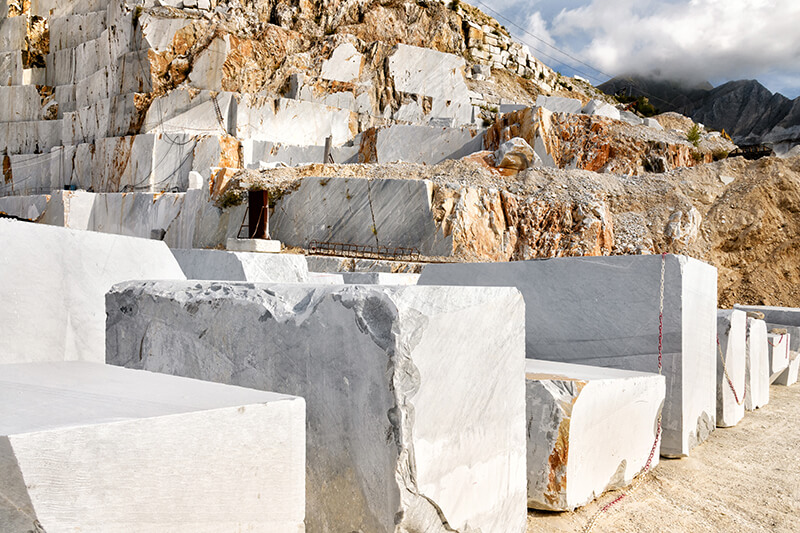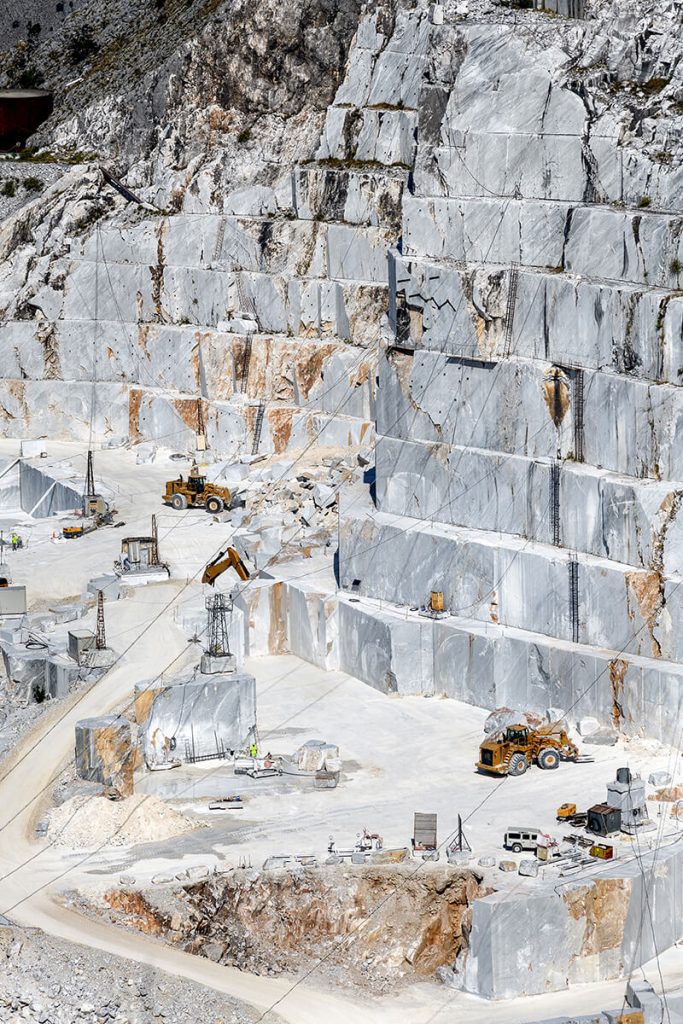Marble, extracted from the depths of nature, is a valuable natural stone used in construction, architecture, and art projects by humankind. However, the extraction and processing of this special stone can have environmental impacts. Therefore, the operation of marble quarries should be based on sustainability principles and aim to minimize environmental effects.
Extraction and Processing of Marble
Marble is usually extracted from mountains and transported to marble quarries in large blocks. This stage should be carefully planned to ensure the preservation of natural resources and the control of the extraction process. Modern marble quarries employ various technological methods to minimize environmental impacts. For example, water jet cutting technology can result in less material loss compared to traditional methods.
After extraction in block form, marble is transported to processing facilities. Here, using specialized machinery and equipment, marble blocks are transformed into sheets or blocks of different sizes. Water and other chemicals may be used in the processing process, so the regular treatment and recycling of wastewater are crucial parts of sustainable operations.


Environmental Impacts and Sustainability Solutions
The environmental impacts of marble quarries may include factors such as water pollution, soil erosion, and disruption of ecosystems. Therefore, as part of sustainable operations, marble quarries should implement various environmental protection measures. These measures include:
- Rehabilitation and Reforestation: When quarry activities cease, the area should be restored through rehabilitation and reforestation projects.
- Water Use and Waste Management: The use of modern technologies to minimize water consumption and effectively treat wastewater is essential.
- Ecosystem Conservation: Protection and monitoring of ecosystems around the quarry to reduce impacts on local flora and fauna.
- Soil Erosion Control: Prevention of soil erosion through reforestation and erosion control measures.
Sustainability Standards and Certifications
Various standards and certifications exist to document the sustainability efforts of marble quarries. For instance, the ISO 14001 environmental management standard provides a framework for assessing and improving a business’s environmental performance. The LEED (Leadership in Energy and Environmental Design) certification is a system that evaluates the environmental impacts of buildings and supports sustainability goals in projects using marble.
In conclusion, the operation of marble quarries should be based on sustainability principles, including the efficient use of natural resources, minimizing environmental impacts, and preserving local ecosystems. Advances and sustainable practices in the marble industry help carry the beauty and durability of this natural stone to future generations while protecting natural resources.
